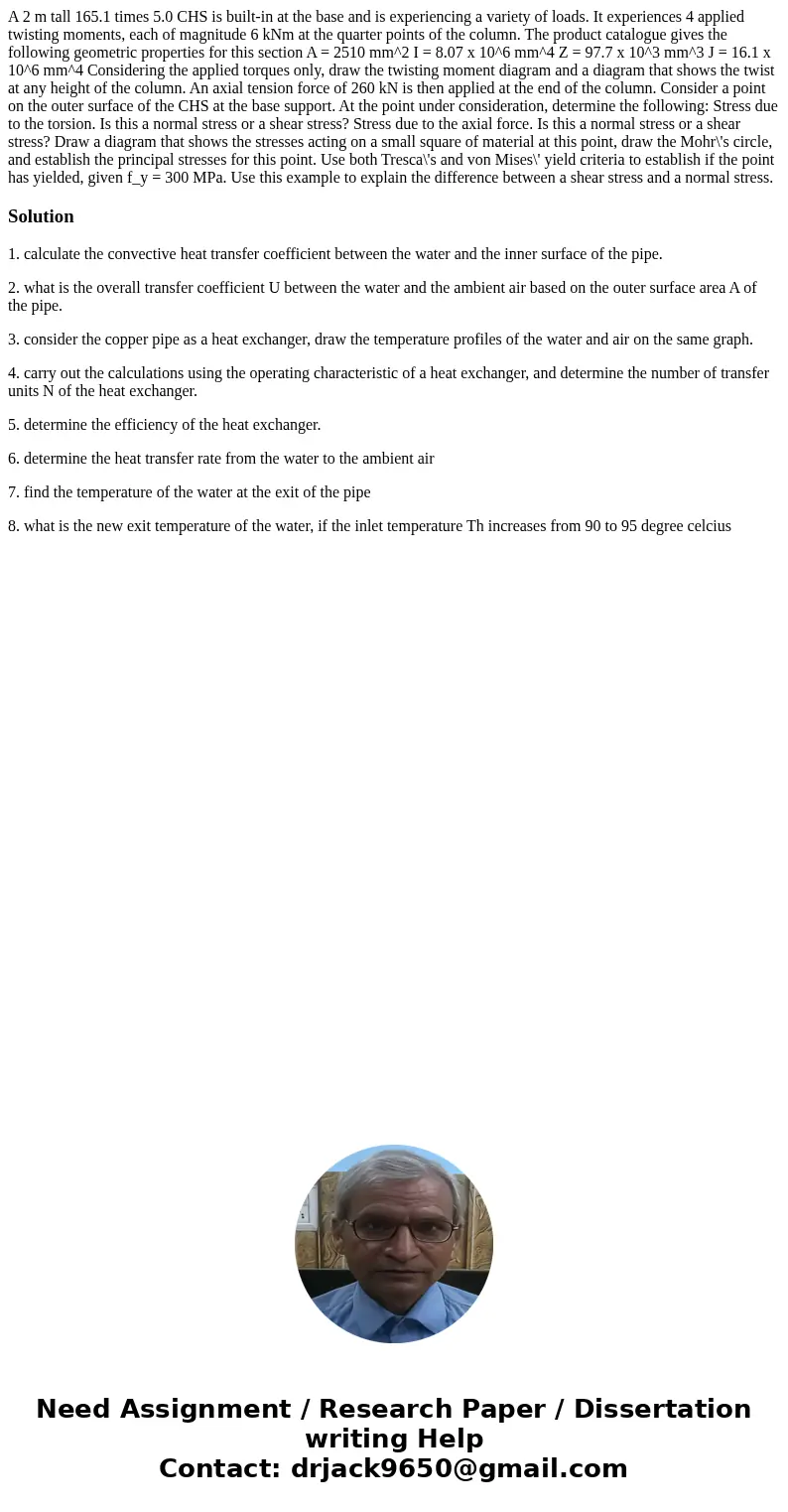A 2 m tall 165.1 times 5.0 CHS is built-in at the base and is experiencing a variety of loads. It experiences 4 applied twisting moments, each of magnitude 6 kNm at the quarter points of the column. The product catalogue gives the following geometric properties for this section A = 2510 mm^2 I = 8.07 x 10^6 mm^4 Z = 97.7 x 10^3 mm^3 J = 16.1 x 10^6 mm^4 Considering the applied torques only, draw the twisting moment diagram and a diagram that shows the twist at any height of the column. An axial tension force of 260 kN is then applied at the end of the column. Consider a point on the outer surface of the CHS at the base support. At the point under consideration, determine the following: Stress due to the torsion. Is this a normal stress or a shear stress? Stress due to the axial force. Is this a normal stress or a shear stress? Draw a diagram that shows the stresses acting on a small square of material at this point, draw the Mohr\'s circle, and establish the principal stresses for this point. Use both Tresca\'s and von Mises\' yield criteria to establish if the point has yielded, given f_y = 300 MPa. Use this example to explain the difference between a shear stress and a normal stress.
1. calculate the convective heat transfer coefficient between the water and the inner surface of the pipe.
2. what is the overall transfer coefficient U between the water and the ambient air based on the outer surface area A of the pipe.
3. consider the copper pipe as a heat exchanger, draw the temperature profiles of the water and air on the same graph.
4. carry out the calculations using the operating characteristic of a heat exchanger, and determine the number of transfer units N of the heat exchanger.
5. determine the efficiency of the heat exchanger.
6. determine the heat transfer rate from the water to the ambient air
7. find the temperature of the water at the exit of the pipe
8. what is the new exit temperature of the water, if the inlet temperature Th increases from 90 to 95 degree celcius

 Homework Sourse
Homework Sourse